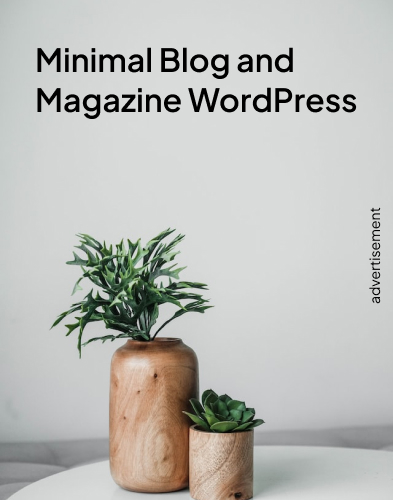
Global fashion is the colorful convergence of different cultures, styles, and innovations that influence our clothing. It breaks down local barriers and old standards to create a vibrant sector that is both fluid and diversified. Global fashion is about more than simply the clothes we wear; it’s about the voices and stories they magnify that cross national boundaries.
Global fashion arises as something that speaks to our common human experience in a time when borders are blurred and cultures collide. It’s not only about the clothes we wear; it’s also about the identities and stories they shape. Style centers are emerging in Tokyo and Lagos, while the vibrant fashion districts of New York and Paris are a common sight. Fashion speaks a universal language that cuts across national boundaries and conveys a wide range of cultural and personal tales.
ABOUT US
Welcome to Global fashion, where I love fashion more than just looks. My adventure started with a simple yet profound realization: there was a need for a platform that not only showcased global trends but also looked further into how these trends link with everyday lives throughout the world.
Driven by the ambition to make international fashion accessible, I designed an area where you can get not just clothes but also a way to express yourself. I think that fashion has the ability to inspire, challenge, and transform. This platform is a community where like-minded individuals can come together to celebrate diversity via style, not just a place to visit.
THE MAIN AIM
Bringing the newest styles, timeless classics, and everything in between, the mission at this platform Global Fashion is to capture the essence of international fashion. With the dedication to providing you with up-to-date fashion news, smart trend analysis, and accurate style forecasts, we make sure you stay on top of the industry.
The carefully picked categories cater to a wide range of preferences and demands, including designer labels and lively street fashion, as well as eco-friendly products and conventional apparel.
Fashion Then and Now:
The Classic Style of Past Times:
In the past, regional cultures and social structures, as well as the rate at which society was changing, had a significant impact on fashion. Often, clothes were made to order, with tailors and fashion designers taking their time. The era was characterized by timeless outlines, durable fabrics, and painstaking attention to detail. Vintage clothing is associated with classic elegance because each item was made to last, both in terms of quality and style.
The Changing Face of Modern Fashion:
These days, fashion is an international phenomenon that crosses boundaries and innovates with each new season. It is distinguished by how quickly it adapts to shifting trends driven by pop culture and digital media. With the help of technology, modern fashion offers a vast array of options and immediate accessibility, ranging from fast fashion to luxury labels. Fashion has become more accessible and diverse than ever thanks to the digital age’s revolutionary changes to shopping, dressing, and interacting with it.
Including Technology:
While needles, threads, and dummies were previously the standard tools of the trade, modern technologies like 3D printing, artificial intelligence (AI) trend predictions, and virtual reality fittings have enhanced the fashion scene. In addition to broadening creative possibilities, this technological infusion has democratized fashion, increasing its accessibility to aspiring designers and fashion fans worldwide.
Why fashion is important?
There are numerous reasons why fashion matters, both personally and globally.
Personal Expression: One of the main ways people communicate their personalities and feelings without using words is via fashion. What you wear can convey your unique style, attitude, and originality. It allows individuals to freely express their creativity and can be a means of articulating their identity and ideals.
Cultural Identity: A community’s identity can be greatly influenced by fashion, which frequently reflects its cultural past. Indian sarees, Scottish tartans, and Japanese kimonos are just a few examples of traditional clothing that is closely linked to cultural histories and rituals, honoring the diversity of customs and beliefs observed worldwide.
Social Influence: Group connection and social standing can be conveyed through clothing. It has the ability to shape standards and bring about change. Fashion has historically been used to remove social boundaries, dispel conventional wisdom, and support social movements. Examples of this include the punk movement of the 1970s, which represented protest against traditional standards, and the flappers of the 1920s, who advocated for women’s rights.
Economic Impact: Fashion is a huge worldwide sector with a large economic footprint. Globally, it creates millions of jobs in everything from production and design to marketing and retail. Fashion may have a significant impact on a nation’s GDP and is essential for economic growth.
Artistic Project: Fashion is a kind of art. Wearable art is created by designers, who are artists who manipulate fabric, forms, and colors. Fashion is a venue for artistic expression and creativity, as seen by fashion weeks and exhibitions hosted across the world.
Function: Fashion serves purposes other than just aesthetics. When worn appropriately, clothing meets occupational regulations, protects against the elements, and improves safety during activities.
Psychological Impact: Clothes has the power to shape how individuals view themselves and are perceived by others, which in turn can have an impact on self-worth and confidence.
Setting trends and making predictions: The fashion industry is a dynamic one that adapts to shifts in the environment, society, and technology. It is a vital gauge of current events and potential future paths since it reacts to and forecasts changes and patterns in culture, technology, and consumer behavior.
What Should You Consider to Ensure Your Fashion Choices Are Stylish and Proper?
First and foremost, comfort and fit are crucial. While comfortable clothing guarantees ease of movement, well-fitting clothing improves look and confidence. Quality over quantity is a wise investment; well-crafted clothing made of sustainable materials not only lasts longer and looks better, but it also promotes environmental principles. It’s important to dress appropriately; clothing should reflect the culture, environment, and occasion.
Choosing traditional styles and neutral colors allows for versatility and long-lasting appeal, making them the perfect choice for timeless fashion.
One’s personal style should be a reflection of their personality and should be carefully modified to embrace new trends without sacrificing their unique look. Modesty may necessitate striking a balance between fashion and coverage, maybe employing layers to adapt to various situations, based on cultural or personal norms. Another factor to consider is maintenance; long-lasting and practically designed clothing is best. Finally, the ability to mix and match pieces in a wardrobe adds to its adaptability and raises the worth and use of each item.










